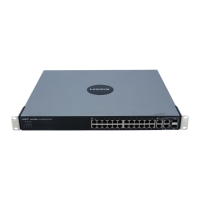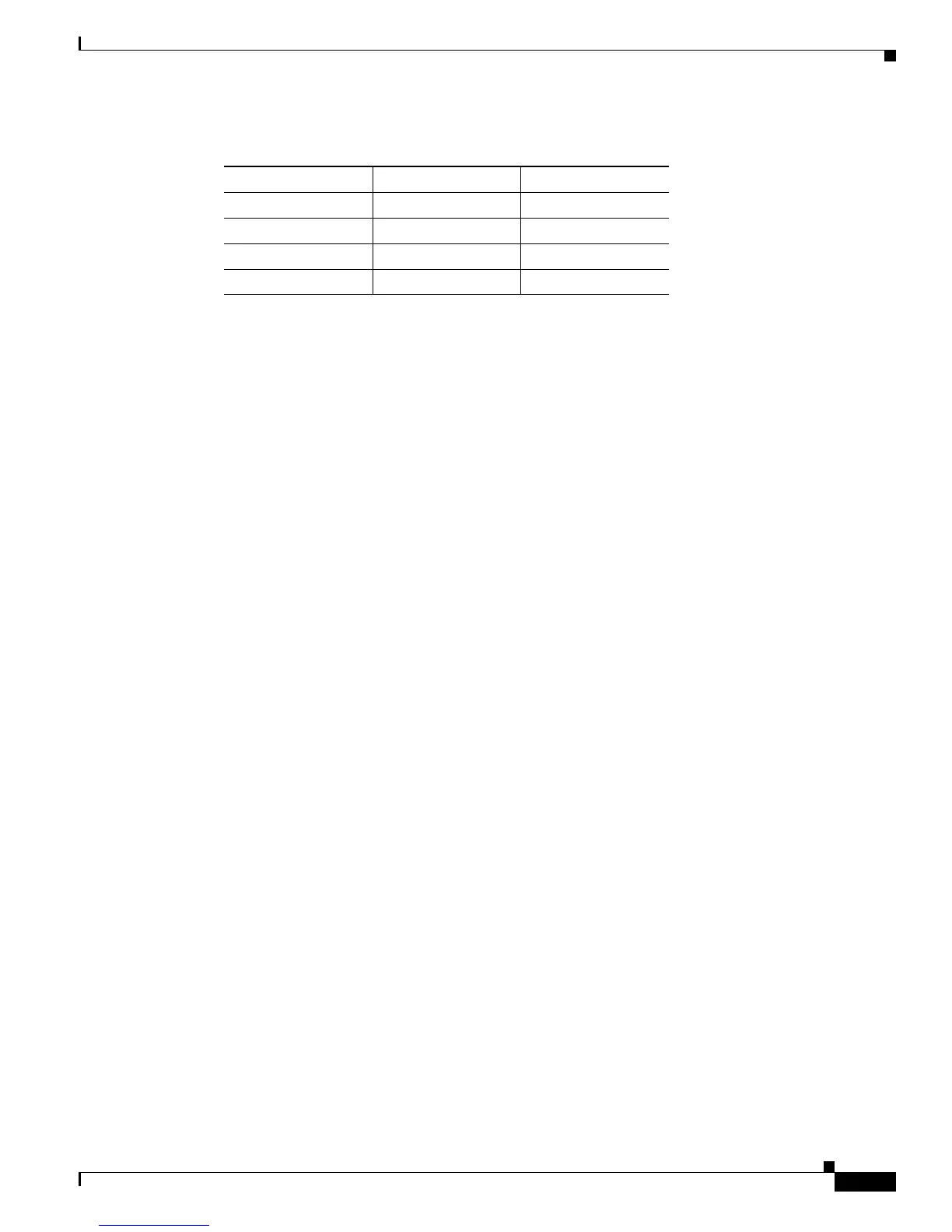7-25
Cisco Wireless LAN Controller Configuration Guide
OL-9141-03
Chapter 7 Controlling Lightweight Access Points
Retrieving the Unique Device Identifier on Controllers and Access Points
Using DFS, the controller monitors operating frequencies for radar signals. If it detects radar signals on
a channel, the controller takes these steps:
• It changes the access point channel to a channel that has not shown radar activity. The controller
selects the channel at random.
• If the channel selected is one of the channels in Table 7-2, it scans the new channel for radar signals
for 60 seconds. If there are no radar signals on the new channel, the controller accepts client
associations.
• It records the channel that showed radar activity as a radar channel and prevents activity on that
channel for 30 minutes.
• It generates a trap to alert the network manager.
Retrieving the Unique Device Identifier on Controllers and
Access Points
The unique device identifier (UDI) standard uniquely identifies products across all Cisco hardware
product families, enabling customers to identify and track Cisco products throughout their business and
network operations and to automate their asset management systems. The standard is consistent across
all electronic, physical, and standard business communications. The UDI consists of five data elements:
• The orderable product identifier (PID)
• The version of the product identifier (VID)
• The serial number (SN)
• The entity name
• The product description
The UDI is burned into the EEPROM of controllers and lightweight access points at the factory. It can
be retrieved through either the GUI or the CLI.
Table 7-2 5-GHz Channels on Which DFS is Automatically Enabled
52 (5260 MHz) 104 (5520 MHz) 124 (5620 MHz)
56 (5280 MHz) 108 (5540 MHz) 128 (5640 MHz)
60 (5300 MHz) 112 (5560 MHz) 132 (5660 MHz)
64 (5320 MHz) 116 (5580 MHz) 136 (5680 MHz)
100 (5500 MHz) 120 (5600 MHz) 140 (5700 MHz)

